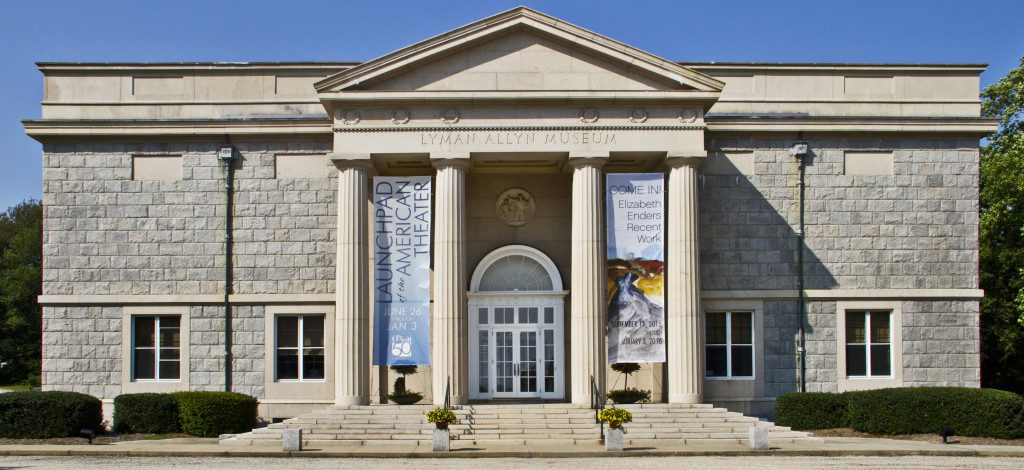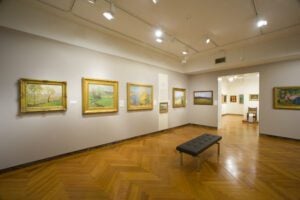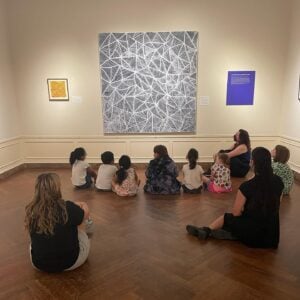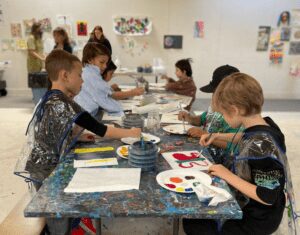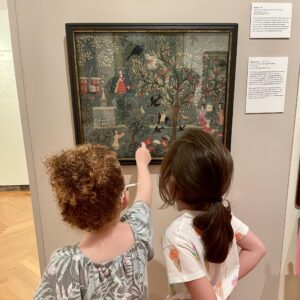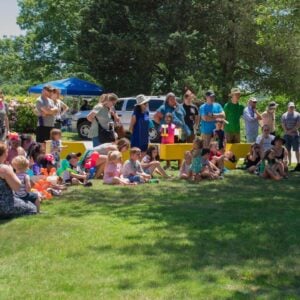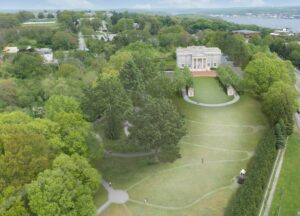Hot Air Balloon Button Collage
Materials Canvas – We used a 12”x16” canvas board. If you do not have canvas, sturdy paper or cardboard will work just fine. Acrylic paint – the primary colors, white and black Paper plate to mix your paints Paintbrush, water bucket and paper towels Buttons – variety of sizes and colors If you don’t have […]
Dreamcatcher Drawing
Materials Paper – any size paper will do, but we recommend thicker paper like watercolor paper. Watercolors – we used liquid watercolors, but a watercolor palette is fine. Crayons or oil pastels Pencil and eraser Black sharpie Watercolor paintbrush Water bucket Paper towels Newspaper Instructions Using a pencil, draw 6-8 circles within each other decreasing […]
Yayoi Kusama Inspired Sculptures
Materials Clay (both a white color and at least one other color) The Museum uses Model Magic, but you can also make your own clay To make homemade clay mix a 2:1 ratio of corn starch & hair conditioner In a bowl, mix the corn starch and conditioner until it forms a ball. Make a […]
Cardboard Tree House
With some cardboard and creativity, bring your dream tree house to life. Materials Thin cardboard (from a cereal or cracker box) Foam, thicker cardboard, wood (a material sturdy to use for the base) Paper towel roll Popsicle and craft sticks Pipe cleaner, string, or ribbon Paint, brushes, water bucket Markers (optional) Tissue paper (optional) Scissors […]
Cardboard Tube Skyline
Channel your inner architect and create your favorite city’s skyline or create your own. Use a dark color paint to create a night time skyline, or paint each building a different color to create a rainbow city. Do not be afraid to stack, cut, and get creative! Materials Cardboard rolls Scissors Paint Pallet Paint brushes […]
Recycled Bottle Planter
Materials Recycled plastic bottle (2 liter size recommended) Scissors Sharpie or marker Paint Pallet (a paper plate works nicely) Paint brushes and a water bucket Paper towel Mod Podge (optional) Soil Seeds, flower, or herb of your choice Instructions Collect the recycled bottle or bottles you wish to use. Using your marker, draw the shape […]
Portrait Photography
Photographers are often the ones who capture everyday life, documenting periods in history for future generations. Dorothea Lange became famous for documenting the Great Depression and capturing the human experience. Photographers today are taking a similar approach and capturing what their world looks like in 2020, from their own families at home to the lines […]
Nature Photography
As summer approaches, take inspiration from photographers of the past. Ansel Adams spent his life exploring the Unites States, photographing national parks and helping the public realize how beautiful our country is. Spending most of his time in Yosemite National Park in California, Adams photographs are known around the world and have inspired generations of […]
Cardboard Roll Sculptures
Transform ordinary paper towel and toilet paper rolls into your own building materials. Construct a cardboard skyscraper or town that can than be taken apart and turned into an entirely new structure. Materials Cardboard rolls Scissors Paint or Markers paint brush (we recommend a larger one) water container paper towel Instructions Gather all the cardboard […]
Assemblage Sculpture
Assemblage is a style of art that uses, or “assembles”, found objects to create a 3-D work of art. You can create your own assemblage sculpture inspired by artist Louise Nevelson (see below) using objects you find in your own home! Materials Cardboard (cut into a circle, oval, rectangle or square) Glue (liquid glue works […]

